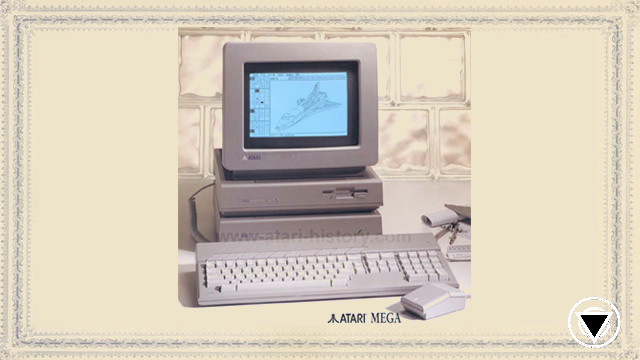
An
Independent Analogue and Digital Arts since 1985
Don't use the simplified
view prompt
An activity,
substance, object, or behavior that becomes the main
focus of a person's life excluding other activities,
or that has begun to harm the individual or others
physically, mentally, or socially can be considered
addictive behavior.

PROPHETS AND PROFITS Have you
ever heard of a self fulfilling prophecy? It works
like this: predict something in such a way
that the fact of your prediction causes the
event."It must run faster!" or "It must do something
new!".

All these investments into atomic bombs, missile
guidance systems, jet engines, and space vehicles
eventually created a highly developed semiconductor
industry in the United States. These semiconductors were
the foundation for computer systems, cell phones, and
video games consoles in the 1970’s.The second argument
largely focused on the individual innovators that
invented and designed the personal electronics of the
1970’s and 1980’s. Much of this theory is based on
the idea that 1960’s counterculture idealism transcended
into 1970’s consumer electronic designs. There was no
doubt that such globally minded, young liberal thinkers
could utilize technology to mold the world into their
own vision. While these two opinions hold some truth,
there could be a possible third argument that points to
the creation of technology in 1970’s and 1980’s.

This relationship between government and technological innovation strengthened further in the post-World War II era. The 1950’s and 1960’s government investment into the defense industry particularly created scientific competition and research that dawned the beginning of unprecedented use of large computers, semiconductors, and satellites. The creation of the nuclear missile technology created a scenario where additional devices were needed that incorporated the internal component.Furthermore, once missile technology became available, the usage of the airplane as a nuclear conveying system became obsolete.

These technologies however were completely monopolized and operated by government institutions. The technology that drove missiles and satellites was still not practical or inexpensive enough to sufficiently reach the consumer masses.The competition in space exploration also invited innovative companies to grab government contracts.

The similarity between computer programs that emphasized personal research and the ideas sought within the Whole Earth Catalog was more than coincidence. The counterculture idea that technology could solve the problems of the individual without government or corporate sponsors went beyond just theory in the 1970’s, it was put into practice. Personal electronics represented an adventure for both entrepreneurs and consumers alike, as each benefited from the new innovative technology that made the life experience efficiently superior. 1960’s rhetoric was clearly seen within the writing of the Whole Earth Catalog, and as a result the document inspired counterculturalists to invent products to change societal thinking.

However, the young 1960’s counterculturalists were not the only individuals with dreams of overthrowing the current system. Indeed, those that had suffered from the atrocities of a modern world also thought that personal technology could change the social community. Auschwitz holocaust survivor Jack Tramiel also had a similar conclusion about the role computers had as a tool in society. Tramiel, who was founder of the Commodore computer company, believed that the fascist system that had tried to kill so many innocents during World War II could be destroyed and prevented with the advent of computer technology. He believed that “too many rules…locked [you] into a system.

Tramiel believed that computers could eradicate the authoritative state structure that caused the holocaust by creating “maverick minded individuals “so the rules don’t take over.

Therefore, for
several of the innovators of the 1970’s consumer
electronic industry, their devices represented a
method to challenge and influence social
thinking.Some would argue that the initial new
inventions never spawned public acceptance of
consumer electronics until large corporations
replicated innovative products. Steven
Usselman, in an essay on IBM history, argued that
large company investments into products came at the
expense of trial and error from smaller
companies.28 Indeed, during the 1970’s the
personal computer market was largely dominated by
small upstart companies. Many larger corporations
chose to make their own small improvements to a
device and advertise their brand name, than invest
in expensive research.



The notion of a type of art or experimental projections that might be considered slower than commercial or institutional norms is certainly familiar in an informal sense, and tends to conform to a certain logic. That is, a familiar stock of filmmakers are, in casual discourse, frequently associated with slowness as either a convenient point of reference or, offhandedly, as a pejorative.

Jack Tramiel, founder of Commodore, knew that the price barrier kept the public consumer from buying the expensive production tools. At one point, he deliberately cut the cost of a 1979 color monitor in half to 300 dollars in order to make sure the consumer market would open.94 These companies cut their prices to provide consumers with an affordable method to purchase a relatively new technological device.

Computers became part of the modern lifestyle because mankind wanted better tools for solving problems and keeping records. In 1979, the computer industry relied on the price/value strategy that had befallen the semiconductor market only five years earlier. In what was known as a “computer war” by Commodore marketing consultant Michael Tomczyk, 1979 was seen as a year Apple, Commodore, Radio-shack, and even Atari all fought for market dominance through advertising coercion methods. Tomczyk was hired at Commodore to change the marketing and consumer compatibility of the company’s business strategy. While Apple astonished the consumer market with glitzy and chic advertisement, Commodore had provided little advertising effort to reach consumers before 1979.

The Atari Corporation, which produced the game Pong where users would bounce a ball between two paddles until one user would miss, purposely offered the arcade game at airports, restaurants, malls, and the computer so that the user would have access to the entertainment source in both public and private areas of life.Hence, consumer electronics were not only used as a workplace tool, but an entertainment product as well. While before, individuals may have interacted with entertainment by participating in mass cultural experiences in movie theaters and sporting events, the video game allowed its participants to undergo a private and reclusive relationship with a machine.

This relationship became concrete when individuals saw the video game as their own perfect entertainment source. Sherry Turkle commented on this phenomenon in which human behavior suddenly embraced the idea of perfection. Turkle saw that many people who played video games sought a type of perfection; meaning that individuals knew the only method to defeat a video game was to be the flawless, perfect user.
Society’s use of technology as a measure of prominence, symbolized an important transition to the materialist lifestyle that created a new level of overindulgence.
Jack Tramiel Business is War Part II.
Turkle specifically cites a player named Jimmy who felt himself “becoming ‘perfect’ and calm” because of the consistent response from the game. This partaking of a particularized entertainment source only added to the unique individuality and Me Me Me experience that many embraced in the 1980’s. As a result of high-technology’s incorporation into the 1980’s American society, individuals developed narcissistic behaviors due to increased efficiency and leisure ability. Because the consumer electronic industry served a mostly professional type of class, the entertainment industry made many high-technological products synonymous with the powerful elite.

The Great Reset; like the climate change, extinction rebellion, planetary crisis, green revolution, shale oil (…) hoaxes promoted by the system; is another attempt to slow down dramatically the consumption of natural resources and therefore extend the lifetime of the current system.It can be effective for a while but finally won’t address the bottom-line problem and will only delay the inevitable.The core ruling elites hope to stay in power which is in effect the only thing that really worries them.The collapse of the Western financial system – and ultimately the Western civilization – has been the major driver in the forecast along with a confluence of crisis with a devastating outcome.


Note: The Internet does not belong to Google.
==================================================================================
Feel
free to contact me and i will respond as soon as
possible.
General Requests: wurch936@gmail.com
Copyrights Heyo
Wurch 1985 - 2024 All rights reserved.
시험관과대광고 / витрохайп / 體外炒作
/ ビトロハイプ / فيتروهيب
==================================================================================